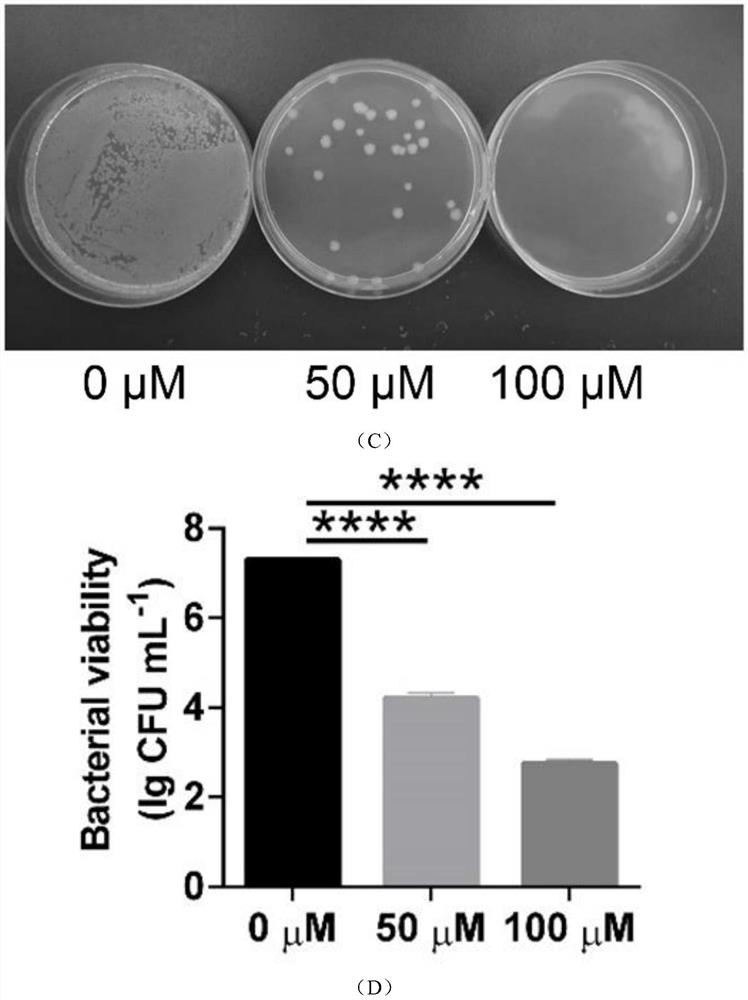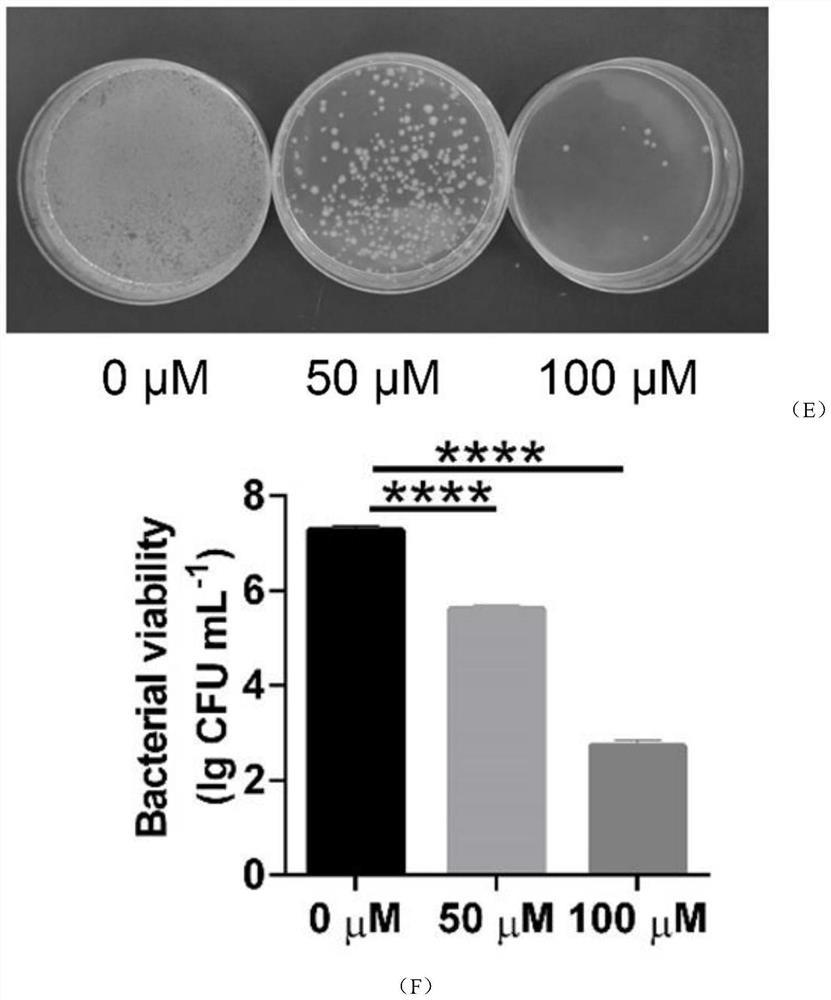Application of nanogold in preparation of medicine for treating shigella infectious enteritis and medicine preparation of nanogold
A technology for pharmaceutical preparations and shigella, which is applied in the field of biomedicine, can solve the problems of the application of nano-gold and the mechanism of action that have not been reported in the literature.
- Summary
- Abstract
- Description
- Claims
- Application Information
AI Technical Summary
Problems solved by technology
Method used
Image
Examples
Embodiment 1
[0024] In vitro inhibition experiment of gold nanoparticles on Shigella
[0025] 1. Experimental steps
[0026] The in vitro antibacterial experiments of gold nanoparticles involved in the following examples all adopt the following process:
[0027] Experimental material: gold nanoparticles;
[0028] The strain of Shigella flexneri is Shigella flexneri 2a 301 strain (sf301, which has been used as a reference strain of Shigella flexneri in China);
[0029] Clinical drug-resistant Shigella flexneri 2448 (RF-2448) and clinical drug-resistant Shigella flexneri II-1 (RF-II-1) were provided by the Affiliated Hospital of Xuzhou Medical University, and their drug sensitivity results are shown in Table 1 , Table 2; It can be seen from the table that RF-2448 and RF-II-1 are resistant to most of the antibiotics. Through the antibacterial experiment of nano-gold on these two clinical Shigella, explore the clinical treatment of nano-gold Potential value of Shigella.
[0030] Table 1 Dr...
Embodiment 2
[0045] Antibacterial activity of gold nanoparticles against Shigella
[0046] 1. Experimental steps
[0047] Shigella Sf301 was co-cultured with 0 μM and 100 μM AuNCs for 2 h, the supernatant was discarded by centrifugation, and washed twice with saline. After adding 100 μL of tissue fixation solution, place in a refrigerator at 4° C. for 12 hours, and wash with 0.1% phosphate buffered saline (PBS) three times, 10 minutes each time. Then dehydration treatment with ethanol solution with gradient concentration (25% ethanol / 50% ethanol / 70% ethanol / 80% ethanol / 90% ethanol / 95% ethanol), 15 min each time. Finally dried, coated, observed and photographed under SEM (hitachi-s4800, Japan).
[0048] 2. Experimental results
[0049] Such as figure 2 It can be seen from the scanning electron microscope images in the figure that, compared with the control group, nano-gold damages the Shigella cell membrane and disintegrates the bacterial structure. It shows that gold nanoparticles ca...
Embodiment 3
[0051] Therapeutic Effect of Nanogold on Shigella Infectious Enteritis
[0052] 1. Experimental steps
[0053] The establishment of the Shigella-induced mouse colitis model involved in the following examples all adopts the following process:
[0054] Experimental animals: male C57BL / 6 mice, weighing 17-18 g, specific pathogen-free (SPF), provided by Zhejiang Weitong Lihua Company. The mice were raised in the Experimental Animal Center of Xuzhou Medical University. The room temperature was 25°C and the humidity was 40-70%. They were given 12 hours of day and night alternating light source, standard laboratory sterilized feed, free to eat and drink, and adapted to the environment for three days before the experiment.
[0055] Such as image 3 As shown, the mice were divided into random control group (NC), Shigella infection group (SF), nano-gold treatment group (SF+AuNCs), 10 in each group. In the NC group, 200 μL of sterile water was intragastrically administered to each mou...
PUM
 Login to View More
Login to View More Abstract
Description
Claims
Application Information
 Login to View More
Login to View More - R&D
- Intellectual Property
- Life Sciences
- Materials
- Tech Scout
- Unparalleled Data Quality
- Higher Quality Content
- 60% Fewer Hallucinations
Browse by: Latest US Patents, China's latest patents, Technical Efficacy Thesaurus, Application Domain, Technology Topic, Popular Technical Reports.
© 2025 PatSnap. All rights reserved.Legal|Privacy policy|Modern Slavery Act Transparency Statement|Sitemap|About US| Contact US: help@patsnap.com



